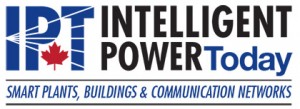Advancements in Voltage Limiting Device Technologies
Voltage limiting devices (VLDs) have long been a cornerstone of overvoltage protection in power systems. However, advancements in materials science and device design are continuously pushing the boundaries of VLD performance. This article explores the latest technological advancements in VLDs, highlighting improvements in response time, energy handling capabilities, and overall durability.
Enhanced Response Times
One of the critical developments in VLD technology is the improvement in response times. Modern VLDs can react to overvoltages more quickly than ever before, often in nanoseconds, minimizing the duration of electrical stress on protected components. This rapid response is crucial for protecting sensitive electronic equipment, which can be damaged by transient overvoltages in microseconds.
Benefits of Faster Response
- Immediate Protection: Quick response times ensure immediate protection against sudden overvoltages, reducing the risk of equipment damage.
- Reduced Electrical Stress: By limiting the duration of overvoltage exposure, these devices help to prolong the lifespan of electrical and electronic components.
Higher Energy Handling Capabilities
Advancements in materials science and engineering have led to VLDs that can handle higher energy levels. These devices are now capable of withstanding severe overvoltage events, such as lightning strikes, without degrading in performance.
Advantages of Increased Energy Handling
- Enhanced Protection: Improved energy handling capabilities provide better protection against powerful overvoltages, safeguarding infrastructure even under extreme conditions.
- Durability: Devices with higher energy ratings have a longer service life, reducing replacement frequency and maintenance costs.
Enhanced Durability and Reliability
The durability of VLDs has been significantly enhanced through the use of advanced materials and innovative designs. These improvements have led to devices that can withstand harsh environmental conditions, including high temperatures, humidity, and corrosive atmospheres.
Impact on System Performance
- Consistent Protection: Durable VLDs maintain their protective capabilities over time, even in challenging environments.
- Reduced Maintenance: With enhanced durability, the need for frequent maintenance or replacement is minimized, leading to lower operational costs.
Smart Integration and Monitoring
A major trend in VLD technology is the integration of smart features, allowing for remote monitoring and diagnostics. These intelligent devices can communicate with central control systems, providing real-time data on their operational status and the electrical network's health.
Benefits of Smart VLDs
- Predictive Maintenance: By monitoring device performance and identifying potential issues early, smart VLDs enable predictive maintenance, preventing failures before they occur.
- System Optimization: Real-time data allows for better decision-making and optimization of the electrical system's performance.
The field of voltage limiting devices has seen significant technological advancements, with improvements in response times, energy handling, durability, and smart integration. These developments have enhanced the protection capabilities of VLDs, ensuring better safety and reliability for electrical systems across various applications. As technology continues to evolve, we can expect further innovations that will push the boundaries of what these critical protective devices can achieve.
